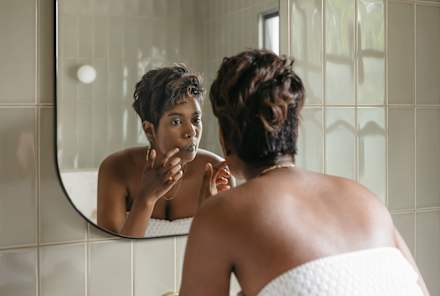Advertisement
3-Steps To Identify Where You Need To Set A Boundary, From A Therapist


Boundaries are about setting limits with ourselves, and others, to effectively manage our time, feel safe in our relationships, preserve our energy, and have our needs met. Most important, boundaries help us with regulating our nervous system. A lack of boundaries can lead to issues like stress, anxiety, mental health issues, and dysfunctional relationships. Ultimately, boundaries are an act of self-care and self-advocacy.
As a child, you had to rely on your caregiver to determine what your needs were and then provide for you, but if you were raised by emotionally immature, absent, or abusive parents, you may be accustomed to not having your needs met and feel unsure about or even afraid of speaking up, setting expectations, and advocating for the things that you want. As an adult, you are your own best advocate. You get to decide what makes you feel safe—or not. Knowing your boundaries is where your agency and autonomy lie. Asserting your needs is the first step in healing the inner child who did not have their needs met.
Where Do We Need Boundaries?
Through the ABC model, which is rooted in cognitive behavioral therapy—a modality that is used to help people understand the relationship between their thoughts and feelings and how it impacts behavior— you can examine your triggers and responses to develop greater awareness of where you may need to set a boundary, either with yourself or with others. Let’s take a look.
- A— Activating event: What or who triggered you?
- B—Beliefs, both explicit and implicit: What are the positive and negative thoughts you have about the activating event or person?
- C—Consequences (positive or negative) that manifest both behaviorally and emotionally: How did you react behaviorally? How did you react emotionally? How did your body respond (e.g., shutting down, dissociation, fatigue)?
Boundary: What needs to be done differently? What boundary can you erect as a way to safeguard yourself from the negative effects of the activating event? Back when I was in college, I formed a friendship with someone who, in many ways, had behaviors that mimicked one of my family members. It left me emotionally exhausted but also irritated, to say the least. They, of course, were not aware of the impact their behaviors had on me, and I often felt bad addressing them, because I didn’t want to hurt their feelings.
As time went on, however, I felt drained, and I knew I needed to find the courage to speak up and set a boundary to safeguard myself from their actions but to also give them an opportunity to see how their behaviors had impacted me. I applied the ABC model to establish boundaries.
- A— Activating Event: This friend had a habit of asking for favors, a lot of them, and the asking often wasn’t the issue; it was the fact that they never showed up for me, ever, and this imbalance made our relationship one-sided. I was always giving; they were always taking. The more they took, the angrier I became.
- B—Beliefs: I wanted to be nice. I thought giving more than I could was an act of loyalty and kindness, when in fact it was people-pleasing and a search for external validation that I mattered to someone. I needed people to see the value in keeping me around, which stemmed from my lack of self-worth and ultimately kept enabling the problematic behaviors that drained me.
- C—Consequence: As a result of giving continuously because I wanted to be seen as “nice,” I was always left tired, upset, drained, and empty— this was the negative consequence of my inability to say no. Even if I felt like this friend should have known better, it was still my responsibility to pay attention to their patterns and speak up to inform them how I felt about their behaviors. This made me realize it was time to develop and state my boundaries.
A boundary with myself looked like: “I will honor my needs by saying no to the things that I don’t want to do for my friend.”
A boundary with my friend looked like: “No, I cannot do this favor for you” or “I am unable to help you out this time.” Boundaries teach us that we are not powerless people.
We do not have to glide through life with a false sense of hopelessness. We are people who have the power to make healthy choices and changes to suit our needs.
From OWNING OUR STRUGGLES by Minaa B., published by TarcherPerigee, an imprint of Penguin Publishing Group, a division of Penguin Random House, LLC. Copyright © 2023 by Minaa B.











